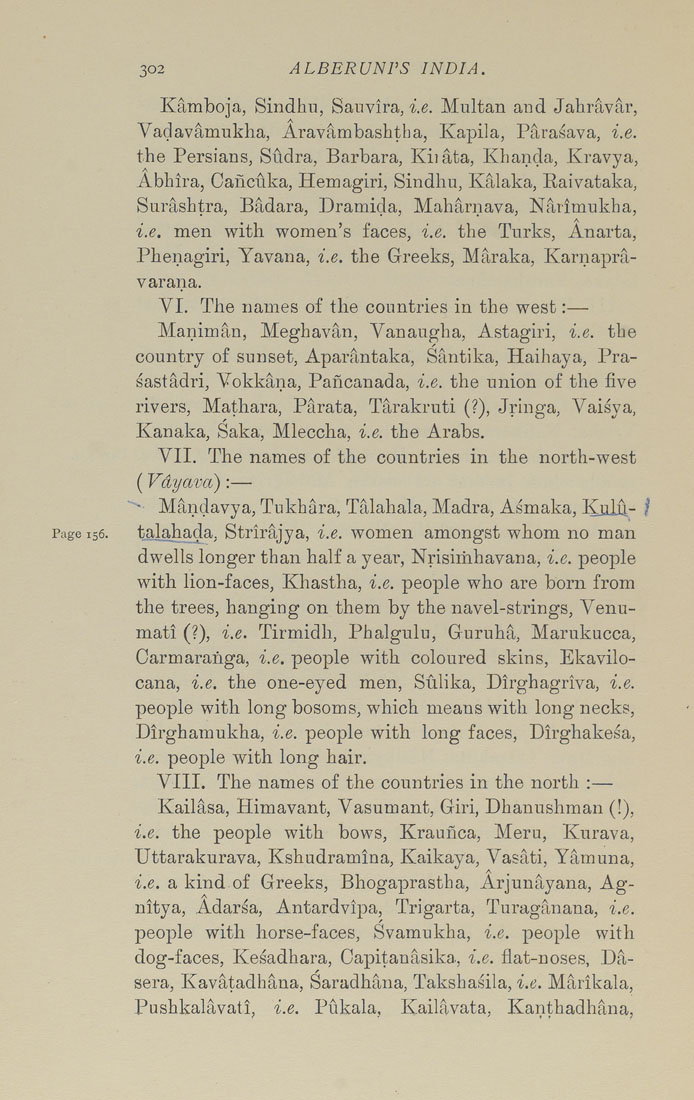302 ALBERUNPS INDIA.
Kamboja, Sindhu, Sauvira, i.e. Multan and Jahravar,
Vadavamukha, Aravambashtha, Kapila, Parasava, i.e.
the Persians, Siidra, Barbara, Kiiata, Khanda, Kravya,
Abhira, Caficiika, Hemagiri, Sindhu, Kalaka, Raivataka,
Surashtra, Badara, Dramida, Maharnava, Narimukha,
i.e. men with women's faces, i.e. the Turks, Anarta,
Phenagiri, Yavana, i.e. the Greeks, Maraka, Karnapra¬
varana.
VI. The names of the countries in the west :—
Maniman, Meghavan, Vanaugha, Astagiri, i.e. the
country of sunset, Aparantaka, Santika, Haihaya, Pra-
sastadri, Vokkana, Pancanada, i.e. the union of the five
rivers, Mathara, .Parata, Tarakruti (?), Jringa, Vaisya,
Kanaka, Saka, Mleccha, i.e. the Arabs,
VII. The names of the countries in the north-west
(Vdyava):—
- Mandavya, Tukhara, Talahala, Madra, Asmaka, Kulu- f
Page 156. talahada, Strirajya, i.e. women amongst whom no man
dwells longer than half a year, Nrisiihhavana, i.e. people
with lion-faces, Khastha, i.e. people who are born from
the trees, hanging on them by the navel-strings, Venu¬
mati (?), i.e. Tirmidh, Phalgulu, Guruha, Marukucca,
Carmarahga, i.e. people with coloured skins, Ekavilo-
cana, i.e. the one-eyed men, Siilika, Dirghagriva, i.e.
people with long bosoms, which means with long necks,
Dirghamukha, i.e. people with long faces, Dirghakesa,
i.e. people with long hair,
VIII. The names of the countries in the north :—
Kailasa, Himavant, Vasumant, Giri, Dhanushman (!),
i.e. the people with bows, Kraunca, Meru, Kurava,
Uttarakurava, Kshudramina, Kaikaya, Vasati, Yamuna,
i.e. a kind of Greeks, Bhogaprastha, Arjunayana, Ag-
nitya, Adarsa, Antardvipa, Trigarta, Turaganana, i.e.
people with horse-faces, Svamukha, i.e. people with
dog-faces, Kesadhara, Capitanasika, i.e. flat-noses, Da-
sera, Kavatadhana, Saradhana, Takshasila, i.e. Marikala,
Pushkalavati, i.e. Piikala, Kailavata, Kanthadhana,
|








